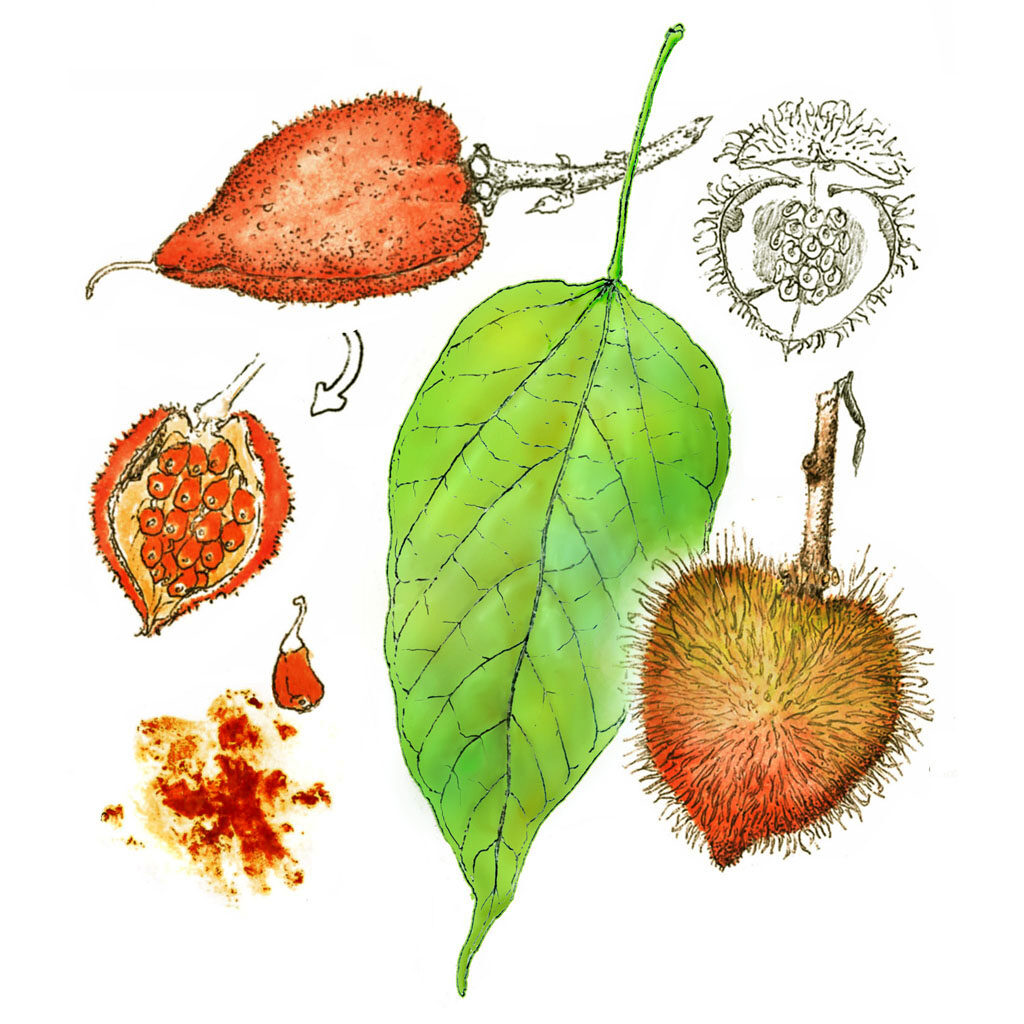Achiote, Annatto

Also known as the Annatto and Lipstick Tree, this evergreen shrub grows 6’-24’ tall, with fragrant pink flowers between November and January, which become heart-shaped fruits about 2” long filled with bright orange-red seeds. If you look at the painting above, you can see where I mashed some seeds onto my sketchpad, then dipped my brush in the mash to paint the seed-filled fruit just above it.
This plant has been used by native peoples of the Americas since ancient times. Achiote paste was used by Mexicans in the 1500s for painting on manuscripts, and the Mayans used decoctions of the seeds for fevers, dysentery, and kidney diseases. The brilliant red dye makes a great body paint and apparently is an insect repellent, though I couldn’t find any real recipes for this. A home-made decoction might color you red, anyway, so maybe it’s not something to try. Achiote has been used as a textile colorant too, which is a good testament to its persistence.
Achiote is called annatto in the US, and is used to give yellow or orange color to foods: cheeses, custards, potatoes, snack foods, cereal, microwave popcorn, etc. It has been used since the 1940s to color margarine, which is actually white – and looks awful on toast without the yellow coloring. In the US the FDA considers annatto to be safe and “exempt from certification,” which means it is sometimes listed on the package ingredients as “natural flavoring.” More info here.
Achiote has a light, nutty, peppery flavor and scent, and is a staple of Belizean cookery in the form of recado, available in any Belizean grocery store. Here is a recipe for traditional Belize “stew chicken” using recado.
Recado is made from grinding the seeds of the achiote fruit to a paste. To make your own recado, collect the seeds and soak them in water, then grind and mash them (Mayans probably used a mano and metate as grinding tools). You can add the paste directly to your cooking ingredients for taste and color. Or try frying the seeds in hot oil for a few minutes to flavor your cooking oil (use a lid, as the hot seeds might jump out of the pan), remove the seeds and add the ingredients to the oil.
There’s an achiote tree below the road that passes through the lower milpa at BIB. Watch for the gorgeous purple flowers November through February.